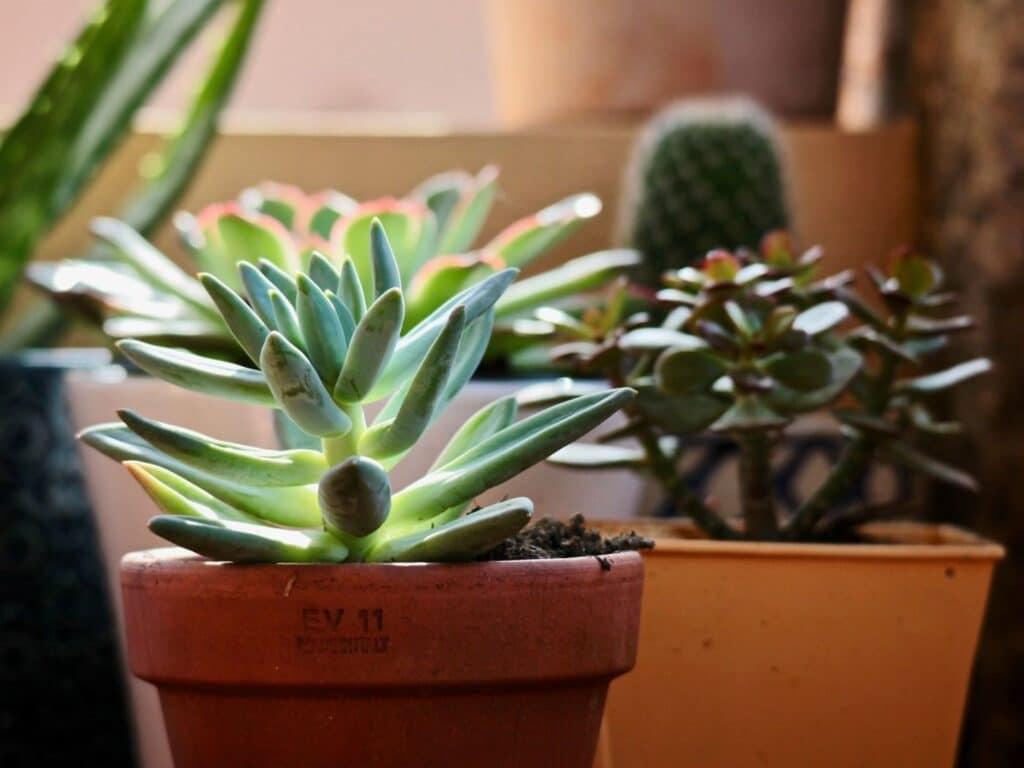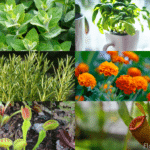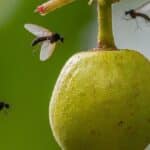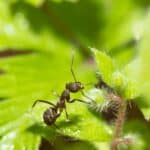You’ve nurtured your succulent, watched it grow, and reveled in its unique beauty. But suddenly, you notice a change that leaves you puzzled: the healthy green leaves are turning yellow.
What could be going wrong? This predicament isn’t uncommon among succulent enthusiasts, and it’s often a sign that your plant needs a little extra care.
In this article, we’ll delve into the reasons behind this leafy transformation and offer practical solutions to restore your succulent’s health. So, don’t lose heart, because with the right knowledge, you’ll have your green companion flourishing in no time.
Understanding Why Succulent Leaves Turn Yellow
Healthy succulents exhibit vibrant colors, usually green. Observing this same plant’s leaves morph into a yellowish hue may well be alarming. It begs the question: why? In this section, we delve into the common causes and the initial steps you’d take to diagnose this transformation.
Common Causes of Yellowing
Yellowing succulent leaves often hint at underlying problems. One frequent culprit relates to the plant’s watering regimen. Excess water or inadequate drainage drowns roots, leads to root rot, and subsequently causes leaf discoloration.
Overexposure to direct sunlight also poses threats. Excess lightconditions usually burn the leaves, manifesting as a yellow or brown color. Inversely, inadequate light leads to etiolation – a condition causing your succulent to stretch towards the light, exhibiting pale, yellow leaves.
Lastly, consider the plant’s feeding schedule. Nutrient deficiency, particularly a lack of nitrogen, often results in yellow leaves.
Diagnosis: The First Steps
Identifying the cause of your succulent’s yellow leaves requires keen observation and a little detective work. Start by examining the plant’s light source. Does it receive too much or too little light? If you believe light may be the issue, try adjusting it gently to a more suitable location.
Explore your watering habits next. If the plant sits in overly damp soil or if the pot lacks proper drainage, consider a more suitable pot or reduce watering frequency.
Finally, analyze the succulent’s feeding routine. It may well be time to introduce a nutrient-rich succulent fertilizer to compensate for any deficiencies. Keep in mind that a shift in plant color often results from a combination of these issues rather than one in isolation. It’s crucial to examine all areas meticulously before reaching a conclusion.
Watering Practices and Their Impacts

Overwatering vs Underwatering
Understanding the distinction between overwatering and underwatering holds paramount significance in the care routine of succulents. Overwatering, the more common factor for yellow leaves, manifests in a spongy texture in the leaves and a noticeable change in color.
If left unchecked, this condition cause root rot, potentially leading to death of the plant. Conversely, those underwatered exhibit a wrinkled, dry appearance, usually beginning with the lower leaves.
Despite their survival skills in arid environments, succulents still need scheduled watering, albeit less frequently, to maintain their vitality.
The Right Way to Water Succulents
Mastering the watering technique can make a significant difference in your succulent’s health. Opt for a ‘soak and dry’ method. It involves soaking the soil thoroughly and then letting it dry out completely before the next watering session.
This approach mimics the natural environment of succulents, alternating between periods of heavy rain and drought. Bear in mind the impact of your local climate. In humid conditions, succulents may require less frequent watering than those in dry environments.
A reliable gauge is to water only when the soil has completely dried out. Your succulents’ journey towards vibrant health begins right here, with mindful watering practices.
Keep these essential tips in mind as you nurture your succulents. It’s not simply about how much you water, but when and how you do it. By refining your watering practices, you’ll see noticeable results in the health and appearance of your plants.
Light Requirements for Healthy Succulents
Light plays a quintessential role in the vitality of succulents. It’s crucial to comprehend the lighting needs of your succulents, given their predisposition to different amounts and types of light. Giving them the appropriate light exposure will ensure that they not only survive but thrive.
Too Much Sun: A Culprit for Yellow Leaves
An overexposure to sunlight could be the hidden offender turning your succulent’s leaves yellow. Succulents adore the sun, yet they aren’t invincible to sunburn. Subjected to severe light conditions, the plant cells can die, resulting in leaves displaying yellowing signs.
Unfortunately, sun-damaged leaves can’t restore to their original form, but precautionary steps can avoid future incidents. Shielding your succulents from harsh afternoon sun, specifically in intensely sunny climates, or gradually acclimatizing them to sunny environments can help avoid this problem.
Finding the Perfect Spot for Your Succulent
Discovering the ideal home for your succulent will lead to healthier plant life. While these plants relish natural light, they often don’t appreciate direct sunlight all day long. A location with morning sun and afternoon shade, such as an east-facing window, often works best.
However, keep inspecting your succulent’s leaves. If they start to appear ‘bleached’ or if they show slight yellowing, they’re probably getting too much direct sun.
In contrast, if your plants are not receiving enough light, their colors may fade, and they may well start to stretch out or appear leggy. The key to healthy succulents lies in observing and understanding their light requirements, making necessary adjustments along the way.
Nutritional Needs and Soil Health
The Role of Nutrients in Leaf Color
Just as humans need a balanced diet for robust health, succulent plants too require a mix of essential nutrients for optimal growth and vibrant leaf colors. Nitrogen, potassium, and phosphorus, collectively referred to as N-P-K values on fertilizer packages, play a critical part in maintaining the succulent’s overall health. An imbalance in these nutrients often manifests as yellow leaves in succulents.
For example, Nitrogen affects leaf growth and color, with deficiency resulting in yellowing leaves. Similarly, Phosphorus shortage could lead to leaf discoloration. Potassium plays a vital role in overall plant health, and its lack can cause leaf edges to turn yellow.
Therefore, it’s crucial to feed your succulents with a well-balanced fertilizer to maintain their colors and general wellness.
Choosing the Right Soil Mix
Selecting an appropriate soil mix is integral to the health of your succulents. Not every soil mix you find in the market suits your succulents. An ideal mix comprises coarse sand, pumice, or perlite which helps in superior drainage, crucial for preventing root rot and leaf yellowing in your succulents.
Also, consider opting for a soil mix specifically formulated for succulents. These mixes have a loamy texture, are well-aerated, and promote excellent root growth, reducing the chances of your succulent leaves turning yellow.
Hence, to safeguard your succulent from discoloration, it’s essential to select the correct soil mix based on the plant’s specific needs.
Diseases and Pests That Cause Yellowing
Your succulent’s yellow leaves may well not always be a result of watering mishaps or nutrient deficiency. Diseases and pest infestations can manifest as yellowed leaves too. This section addresses common pests and diseases that may well be color-thieving culprits.
Identifying Common Succulent Pests
Unwanted critters also find succulents appealing. Pests like aphids, mealybugs, and scale insects may latch onto your plants, their feeding habits leading to your succulent’s yellow leaves.
Aphids, small soft-bodied insects, often cluster on new plant growth, sap-sucking activities causing leaf yellowing. Mealybugs, appearing as tiny cottony masses on your plants, feed on succulent sap, leading to leaf discoloration.
Similarly, scale insects, with their waxy or armored shells, latch on to feed, suggestively causing leaves to turn yellow. Spotting these little bugs early can save your plants. A simple treatment strategy includes washing with warm soapy water or neem oil application, acting as a gentle insecticide.
Fungal Diseases and How to Treat Them
Besides pests, fungal diseases also cause succulent leaves to yellow. Common culprits include Botrytis cinerea, a fungus causing an all-too-recognizable gray mold, and Fusarium, causing cacti and succulent roots to rot and leaves to yellow.
Candida, a yeast-like fungus, may well also infect succulents, causing the leaves to yellow and wilt. If you notice cottony clusters on your plant or yellowing without an apparent cause, it’s likely a fungal infection.
Fungicides available in gardening stores are treatment options, but prevention is best. Maintaining plant cleanliness and allowing enough breathing room between your succulents helps keep these fungal threats at bay.
Thermotherapy, that is, subjecting plants to high temperatures may also be effective in killing certain fungi, safeguarding your succulent’s health.
Environmental Stress Factors
Environmental changes play a pivotal role in yellowing of succulent leaves. As succulents are typically desert plants, they’ve developed mechanisms to tolerate different environmental stressors. However, sudden or significant changes can disrupt plant health, leading to issues like yellow leaves.
Temperature and Humidity Effects
Sudden temperature fluctuation affects your succulents’ health, if not monitored. Succulents thrive in temperatures between 60 and 80 degrees Fahrenheit, with a dip in temperature at night. Your plant’s leaves may well turn yellow if exposed to colder or hotter climates.
Extremely low or high humidity levels also affect succulents. When relative humidity is too low, succulents can stress and dehydrate, leading to yellowing leaves. Conversely, high humidity can encourage disease development, such as fungal infections, which may cause yellowing.
Transplant Shock and Acclimatization
Transplantation or repotting often disrupts succulent roots, causing plant stress. Plant tissues, such as leaves, may respond to this stress by turning yellow. Don’t be alarmed when you see some leaves turning yellow after repotting– it’s the succulent way of signalling stress.
Acclimatization is the process of a plant adapting to a new environment. If succulents are moved from a low to high light intensity environment (or vice versa), they can suffer from light stress, resulting in leaf discoloration. Patience and careful monitoring help in managing these changes and maintaining your succulent’s health.
Preventive Measures and Best Care Practices
How to Prevent Yellowing Leaves
Improving the health of your succulent starts with preventive measures. These measures aren’t difficult, they just require some dedication and consistency from your side. Remember, succulents, like any other plant, respond best to consistency.
First, ensure your succulent has ample access to sunlight, allow it to adjust gradually to new light levels and avoid sudden changes. This happens to be an essential step to prevent any yellowing of the leaves.
In terms of watering, regulated, controlled, and less frequent watering practices positively impact succulents. Avoid drenching the soil and allow it to dry out completely in between watering as this limits the chances of overwatering.
Furthermore, make it a practice to regularly check the temperature and humidity levels in your succulent habitat. Find a suitable place in your home that provides optimum temperature and humidity conditions and maintain it.
Lastly, employ proper transplantation techniques. When relocated, succulents face acclimatization issues. Gradual transition, in this case, proves beneficial.
When to Consult a Professional
While preventive measures are suitable for maintaining the health of your succulents, sometimes, despite your best efforts, problems may persist. In such scenarios, it’s practical to consult a professional.
For example, if yellow leaves become a recurrent issue and your altered care practices don’t show significant improvement, a professional’s expert advice may well be necessary. Or, if the succulent starts to exhibit other signs of illness, such as rotting or wilting, it’s beneficial to turn to an expert. They can help identify the underlying issues that may well not be evident to the inexperienced eye.
Finally, it’s worth mentioning that consulting a professional doesn’t equate to failure. It’s another step towards the well-being of your succulent. And remember, every plant comes with its own set of challenges and learning to navigate them takes patience and experience.
FAQs
Why are my succulent leaves turning yellow?
Yellowing of succulent leaves can occur due to several reasons, including overwatering, inadequate drainage, too much sunlight exposure, and lack of necessary nutrients.
Can temperature fluctuations affect my succulent’s health?
Yes, environmental stress factors like major temperature fluctuations can impact your succulent’s well-being negatively, often leading to issues like wilting or yellowing.
How can I prevent my succulent from getting stressed?
To prevent plant stress, regular check and control of the temperature and humidity levels are important. Adjusting the light levels gradually and careful watering can also help optimize the plant’s health.
What should I do if my succulents still show signs of illness despite my preventive efforts?
If your succulents show signs of illness despite your efforts, consider consulting a professional. They may be able to diagnose potential diseases early and provide appropriate solutions to ensure your plant’s well-being.
Why is professional help important for ailing succulents?
Professional help is invaluable when dealing with plant illnesses. Experts are trained to recognize and treat various plant illnesses, thereby ensuring a proactive step towards maintaining your succulent’s health.







